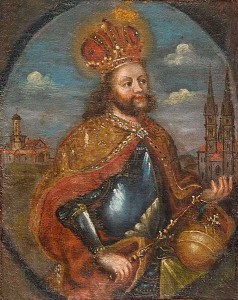 Today we liturgically honor memory of the emperor, Saint Henry. He is the Patron of Benedictine Oblates. Those who are Benedictine oblates will also recall that Saint Frances of Rome (who feast is in March) is the other holy patron of Oblates. This King Saint Henry II is not the same person of the English or French Henry II of those monarchies. He is the only German monarch canonized saint. His wife was Saint Cunegonda. Saint Henry’s feast day, falls within the Octave of Saint Benedict reminding us of the bond that united him with our Benedict.
Today we liturgically honor memory of the emperor, Saint Henry. He is the Patron of Benedictine Oblates. Those who are Benedictine oblates will also recall that Saint Frances of Rome (who feast is in March) is the other holy patron of Oblates. This King Saint Henry II is not the same person of the English or French Henry II of those monarchies. He is the only German monarch canonized saint. His wife was Saint Cunegonda. Saint Henry’s feast day, falls within the Octave of Saint Benedict reminding us of the bond that united him with our Benedict.
The Henry we honor today was crowned Emperor in Saint Peter’s Basilica by Pope Benedict VIII in AD 1014. Henry had the reputation of visiting Benedictine monasteries, often singing the Divine Office with the monastic community and spending time in prayer. His manner of life was centered around the Divine Office and living according to the Rule of St Benedict.
One of the miracles of Saint Benedict did for Henry was to cure him while at the famed monastery of Monte Cassino. Saint Henry was an oblate of the Abbey of Cluny and then asked to make profession as monk at the Abbey of Saint-Vanne. The abbot received him as a monk, and then ordered him, in the name of obedience, to return to the throne.
The Mass speaks of Saint Henry as person who meditated the revelation of Divine Wisdom and held the Word of God in his heart. Likewise, history tells us that he was not obsessed with the accumulation of wealth; he used his goods as alms for the poor; that he resisted temptation and relied on the truth and mercy of God when his subjects lied to him.
“Set your minds on things that are above,” says Saint Paul, “not on things that are on earth” (Colossians 3:3).
